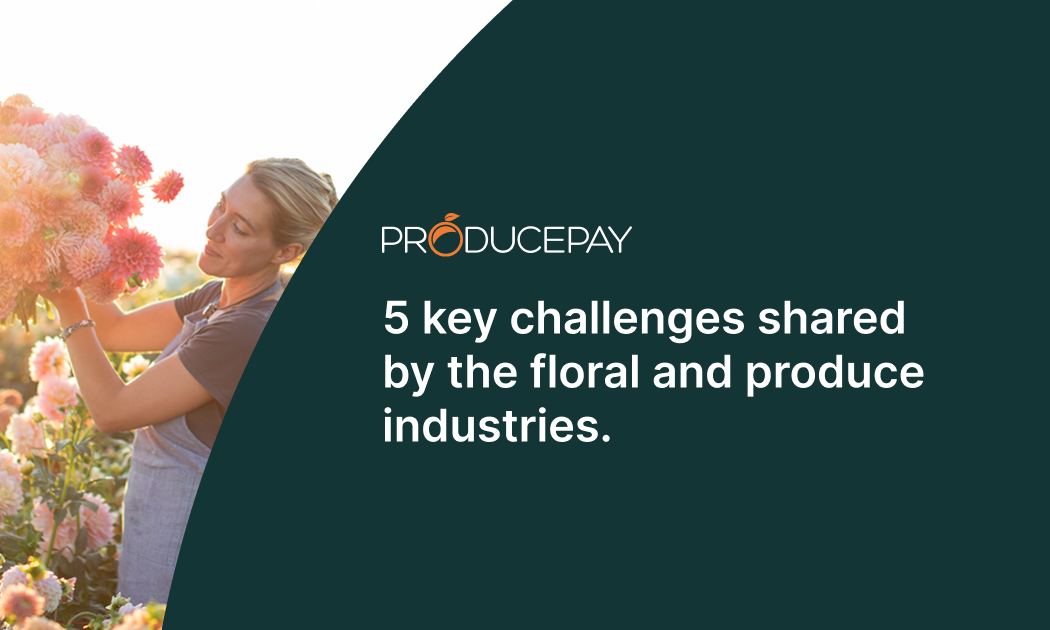
5 key challenges shared by the floral and produce industries.
While we traditionally think of agriculture in terms of food production, cultivated flowers and ornamental plants are an economically vital part of the industry.
According to Research and Markets’ “Global Floriculture Market” report, the global floriculture market is projected to reach $57 billion by 2026, driven by increased demand for cut flowers, ornamental plants and floral arrangements for events, decoration and gifts.
However, both the floral industry and the produce industry face several common challenges that they must overcome to maintain the viability of their businesses.
1. Resource availability
Both industries require natural resources such as water, soil and nutrients for plant growth, as well as labor and capital to maintain their operations. However, these resources are limited by various factors and constraints.
While water is essential to irrigate crops and fields, supplies have decreased due to climate change, population growth, and competition with other sectors.
In addition, flower growing and food cultivation also require arable land, which is limited, as urban growth and the expansion of other economic sectors reduces its availability.
That’s why it’s essential to invest in efficient irrigation practices, such as drip irrigation and water reuse and to use growing techniques that require less land, such as vertical farming and greenhouse production.
2. Securing financing
Both sectors operate in production and sales cycles that are seasonal and unpredictable, making long-term financial planning difficult. This creates uncertainty for investors and lenders, who may hesitate to provide financing to produce and flower businesses.
In addition, both the floral and agricultural industries require significant infrastructure, equipment and technology investments to maintain and improve productivity. These investments often represent a financial risk for farmers and floral producers, especially in regions where access to capital may be limited or costly.
Another common challenge is the need for collateral to back loans. For most agricultural businesses, the assets are mainly biological and perishable, such as plants, crops, or cut flowers. It’s difficult to obtain asset-based financing, when traditional collateral, such as real estate, is not available.
3. Overcoming pests and diseases
Managing pests and diseases is a shared challenge between both industries due to the interconnection and similarities of their production systems.
The floral and produce sectors depend on healthy, productive fields to meet market demand and ensure profitability. Pests and diseases pose a significant threat to any crop, including grains, fruits, vegetables or flowers.
Both industries must implement sustainable and effective methods to control pests and diseases, while also minimizing chemical use and reducing environmental impact.
In addition, pests can move from one crop to another via vectors such as insects or the wind, which means that a pest that affects crops in agriculture can also impact floral crops and vice versa.
4. Enhance sustainability and environmental protection
Improving sustainability and environmental protection is another shared challenge, as both industries depend on natural resources and require responsible agricultural practices.
All growers must adopt measures to conserve soil, promote responsible water management and protect biodiversity, to prevent the overexploitation of natural resources and the indiscriminate use of pesticides.
5. Optimize the efficiency of marketing and distribution
Efficient and resilient supply chains are essential to both industries, and they face similar obstacles in dealing with complex import regulations and changing consumer demand.
The floral and produce industries must properly manage logistics and distribution to ensure products reach consumers in optimal condition.
In addition, careful planning and precise coordination between growers, distributors and retailers is required to meet the demand for annual and seasonal products in international markets.
Another shared challenge is the need to adapt to changing consumer preferences and market trends. Innovations in product presentation, diversification of supply and promotion of ethical and sustainable business practices can improve competitiveness and drive market success.
What options do farmers and florists have to face these challenges?
Because these issues can hinder the growth of agricultural and floral businesses, it’s critical to have the right business partners to meet these challenges. Securing the capital and liquidity needed to maintain the continuity of operations and promote business growth and expansion will be crucial to the future of farmers and floriculturists.
Find out how ProducePay can help you grow your business.
Sources: SAF, Research and Markets, World Bank

